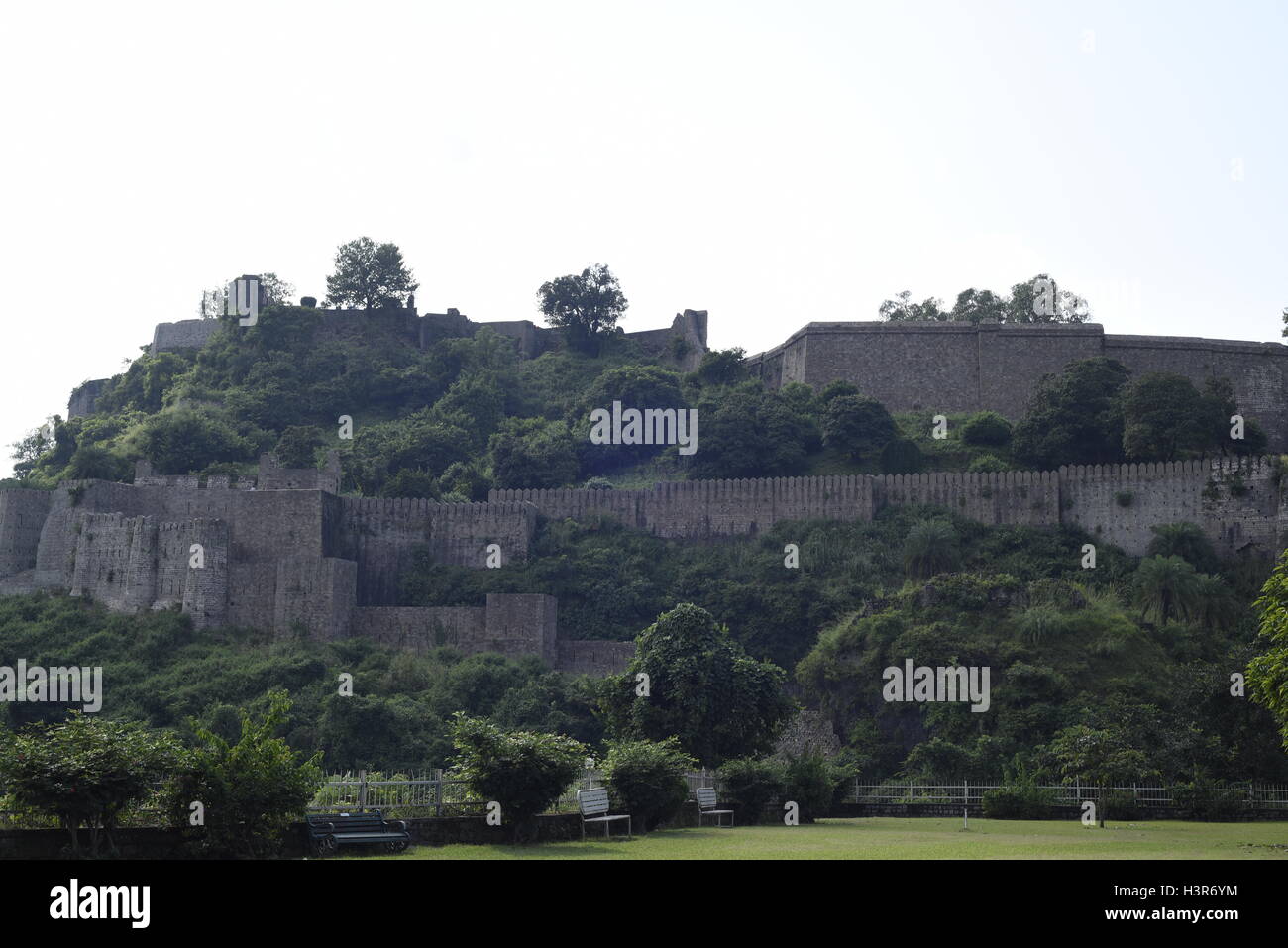The historical architecture Kangra Fort is located 20 kilometers from the town of Dharamsala on the outskirts of Kangra, India.

Image details
Contributor:
Ambuj Khanna / Alamy Stock PhotoImage ID:
H3R6YMFile size:
69.1 MB (2.3 MB Compressed download)Releases:
Model - no | Property - noDo I need a release?Dimensions:
6016 x 4016 px | 50.9 x 34 cm | 20.1 x 13.4 inches | 300dpiDate taken:
16 September 2016Location:
Kangra, Dharamshala, Himachal Pradesh, India, Asia (32.1°N 76.27°E)More information:
Kangra Fort Dharamshala, like many other hill stations in India, has a long history. The remains of its rich historical past are everywhere, but they are nowhere as prominent as in The Kangra Fort. Situated just 20 km away from the city of Dharamshala, this fort lies at the beginning of a town called Kangra. It was built by Kangra’s Royal family, The Katoch Dynasty. This ancient dynasty has its roots in the Trigarta Kingdom, which is found in the historical epic book called Mahabharata. Kangra Fort is the biggest fort in Himachal Pradesh and is one of the oldest known forts in the country. It also finds mentions in Alexander’s records. Architecture A small courtyard leads you to the fort. There are two gates, which are from Sikh period guard this courtyard. Even though the gates look quite historical, they are relatively new and don’t hold any historical importance. A narrow passage takes you to the top of the Fort. While walking upwards, you will pass through Amiri Darwaza and Ahani Darwaza, which were added by Nawab Alif Khan, who was governor of Kangra during Mughal rule. These gates were damaged during the devastating earthquake in Kangra, but restored to their original grandeur. However, two other gates, Handeli and Darsani were not that lucky and were ruined. The passage then takes you to Jahangiri Darwaza. This gate used to be the main entrance of the fort until 1620 A.D. when Jahangir added another building adjoining it. Jahangir rebuilt this gate along with the building adjoining the fort. The Mughal architecture distinguishes this area from rest of the fort. The courtyard of this fort has temples of Ambika Devi, Laxmi Narayana and Sitala. You must visit these temples to get the blessings of holy deities. These temples were also damaged during the earthquake, but resurrected again. However, there is still some debate on whether the earlier structures were really temples or not. The best time to visit late May - November [Content by traveldharamshala]